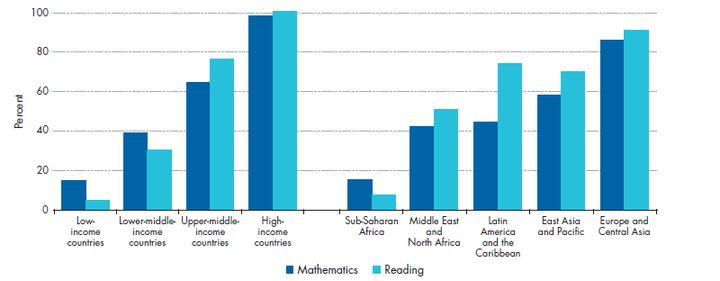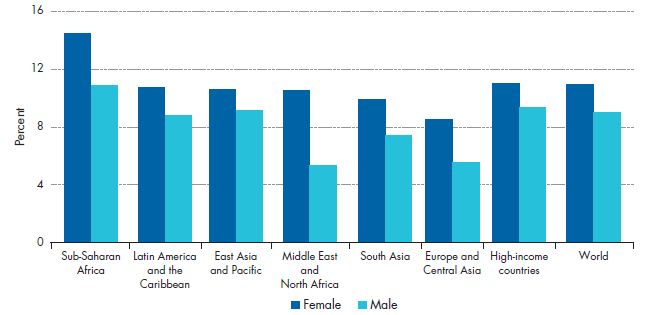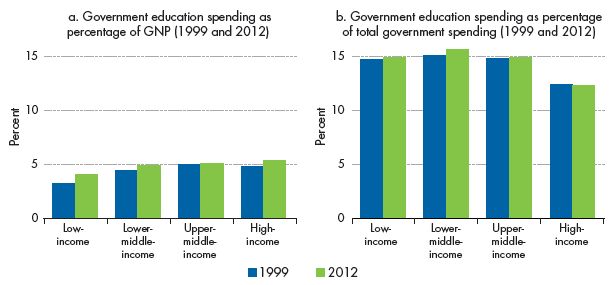Every year, the World Bank's World Development Report takes on a topic of central importance to global development. The 2018 Report, Learning to Realize Education's Promise, is the first ever devoted entirely to education. The Report explores four main themes: education's promise, the learning crisis, promising interventions to improve learning, learning at scale. Some inputs of this Report were discussed at the World Bank Group Youth Summit in November 2016, which I attended to debate on the future of education. What is most important and fascinating about this Report is that it revealed what I was right about: “Our educational system does not meet its learning promise.”

Look, we all know that the only way out of poverty is to get a proper, equitable, and affordable education. It was made aware to us since we are little that we need to study and that education is our basic human right. Moreover, it has tremendous impact on human capital, productivity, incomes, and economic growth. It generates trust, boosts social capital, and creates institutions that promote inclusion and shared prosperity. But, what happens when the only product that gets us out of poverty is overdue or expired? The learning crisis takes its place.
Have you ever felt that what you are studying in class has no practical approach, or the knowledge you got in college is not liquid and can’t be used as a proper skill? Well, the Report states that ”Schooling is not the same as Learning.” This learning crisis is a moral crisis. When delivered well, education cures a host of societal ills. But, these benefits depend largely on learning. Schooling without learning is a wasted opportunity. More than that, it is a great injustice: the children whom society is failing most are the ones who most need a good education to succeed in life. Any country can do better if it acts as though learning really matters. That may sound obvious—after all, what else is education for?

The percentage of primary school students who pass a minimum proficiency threshold is often low. Median percentage of students in late primary school who score above a minimum proficiency level on a learning assessment, by income group and region.
Schools are failing learners, the Report states. The poor implementation of policies by the local authorities leads to this problem. Mainly, it happens because of the political challenges: key players don’t always want to prioritize student learning. Politicians act to preserve their positions in power, which may lead them to target particular groups (geographic, ethnic, or economic) for benefits. Bureaucrats may focus more on keeping politicians and teachers happy than on promoting student learning, or they may simply try to protect their own positions.
Some private suppliers of education services—whether textbooks, construction, or schooling—may, in the pursuit of profit, advocate policy choices not in the interest of students. Teachers and other education professionals, even when motivated by a sense of mission, also may fight to maintain secure employment and to protect their incomes. Because of these competing interests, the choice of a particular policy is rarely determined by whether it improves learning. And, we as students are left alone, most of the times with little or no learning at all. We can not rely on them anymore, we must advocate and lobby for our interests.

More schooling is systematically associated with higher wages. Median percentage increase in wages associated with each additional year of schooling, by country group and gender. Note: Figure is based on the latest available data, 1992–2012. Regions do not include high-income countries.
Still, there is hope. To shift the system toward learning, technically and politically, reformers can use three sets of tools: better use of information and metrics, forming coalitions and incentives, and innovation and agility. Therefore, the payoff to doing what needs to be done is a system in which the elements are coherent with each other and everything aligns with learning - but, where is funding fitting in?
Increased financing can support this learning for-all equilibrium, if the various key actors behave in ways that show learning matters to them. This is a big “if” because higher levels of public spending are not associated statistically with higher completion or even enrollment rates in countries with weak governance. More financing for business as usual will therefore just lead to the usual outcomes.
But where countries seriously tackle the barriers to learning for all, spending on education is a critical investment for development, especially for those countries where overall spending is currently low, as recent major studies of global education have emphasized. An injection of financing—either from domestic or international sources—can help countries escape the low-learning trap, if they are willing to take the other necessary steps in count.

Governments devote a large share of their budgets to education. Note: Median values are shown. GNP = gross national product.
The future of work will place a premium on our learning outcomes. Moreover, many disadvantaged youth are not in school and will not be able to keep up. Fees and opportunity costs are still major financial barriers to schooling, and social dimensions of exclusion. Also, rapid technological change has led to major shifts in the nature of work, leading some to declare this a new era—the Second Machine Age or the Fourth Industrial Revolution. It requires from us to adapt and learn faster in order to become valuable in the job market. I call this “The Educational Liquidity Factor” - it represents how fast we can turn learning into valuable skills and how fast we can mutate our available skills to the changing job market’s demands.
The lesson, then, is that better interventions at the school and student levels will improve learning only if countries tackle the stubborn system level technical and political barriers to change. I always believed, since I got to the age of reasoning, that it was never in any governments’ interests to have a well educated society that makes wise decisions but rather building an obedient one - just smart enough to run the machines, with absolute zero state of interest for questioning or criticism, and chained to their inner instinct of consumerism. Those who become thinkers and challenged policies or authorities were long ago silenced or they were never understood by the masses because of the manufactured consent. What I am even more interested in is finding out - which one are you going to become?
